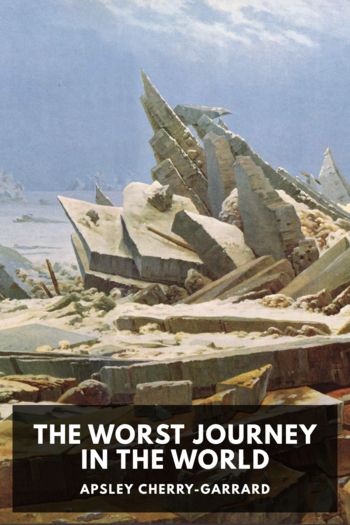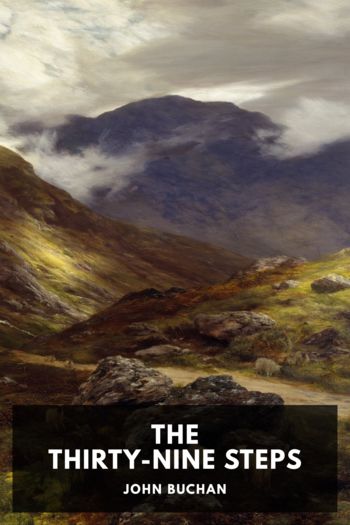The Worst Journey in the World by Apsley Cherry-Garrard (book recommendations for teens txt) 📕

Description
In 1910 famous explorer Robert Falcon Scott led the Terra Nova Expedition to the South Pole. The expedition was part scientific and part adventure: Scott wanted to be the first to reach the pole.
The expedition was beset by hardship from the beginning, and after realizing that they had been beaten to the pole by Roald Amundsen’s Norwegian Expedition, the party suffered a final tragedy: the loss of Scott and his companions to the Antarctic cold on their return journey to base camp.
The Worst Journey in the World is an autobiographical account of one of the survivors of the expedition, Apsley Cherry-Garrard. It’s a unique combination of fascinating scientific documentary, adventure novel, and with the inclusion of Scott’s final journal entries, horror story. Journey is peppered throughout with journal entries, illustrations, and pictures from Cherry-Garrard’s companions, making it a fascinating window into the majesty and danger of the Antarctic.
Read free book «The Worst Journey in the World by Apsley Cherry-Garrard (book recommendations for teens txt) 📕» - read online or download for free at americanlibrarybooks.com
- Author: Apsley Cherry-Garrard
Read book online «The Worst Journey in the World by Apsley Cherry-Garrard (book recommendations for teens txt) 📕». Author - Apsley Cherry-Garrard
And now Bill was feeling terribly responsible for both of us. He kept on saying that he was sorry, but he had never dreamed it was going to be as bad as this. He felt that having asked us to come he was in some way chargeable with our troubles. When leaders have this kind of feeling about their men they get much better results, if the men are good: if men are bad or even moderate they will try and take advantage of what they consider to be softness.
The temperature on the night of July 7 was −59°.
On July 8 we found the first sign that we might be coming to an end of this soft, powdered, arrowrooty snow. It was frightfully hard pulling; but every now and then our finnesko pierced a thin crust before they sank right in. This meant a little wind, and every now and then our feet came down on a hard slippery patch under the soft snow. We were surrounded by fog which walked along with us, and far above us the moon was shining on its roof. Steering was as difficult as the pulling, and four hours of the hardest work only produced 1¼ miles in the morning, and three more hours 1 mile in the afternoon—and the temperature was −57° with a breeze—horrible!
In the early morning of the next day snow began to fall and the fog was dense: when we got up we could see nothing at all anywhere. After the usual four hours to get going in the morning we settled that it was impossible to relay, for we should never be able to track ourselves back to the second sledge. It was with very great relief that we found we could move both sledges together, and I think this was mainly due to the temperature which had risen to −36°.
This was our fourth day of fog in addition to the normal darkness, and we knew we must be approaching the land. It would be Terror Point, and the fog is probably caused by the moist warm air coming up from the sea through the pressure cracks and crevasses; for it is supposed that the Barrier here is afloat.
I wish I could take you on to the great Ice Barrier some calm evening when the sun is just dipping in the middle of the night and show you the autumn tints on Ross Island. A last look round before turning in, a good day’s march behind, enough fine fat pemmican inside you to make you happy, the homely smell of tobacco from the tent, a pleasant sense of soft fur and the deep sleep to come. And all the softest colours God has made are in the snow; on Erebus to the west, where the wind can scarcely move his cloud of smoke; and on Terror to the east, not so high, and more regular in form. How peaceful and dignified it all is.
That was what you might have seen four months ago had you been out on the Barrier plain. Low down on the extreme right or east of the land there was a black smudge of rock peeping out from great snowdrifts: that was the Knoll, and close under it were the cliffs of Cape Crozier, the Knoll looking quite low and the cliffs invisible, although they are eight hundred feet high, a sheer precipice falling to the sea.
It is at Cape Crozier that the Barrier edge, which runs for four hundred miles as an ice-cliff up to 200 feet high, meets the land. The Barrier is moving against this land at a rate which is sometimes not much less than a mile in a year. Perhaps you can imagine the chaos which it piles up: there are pressure ridges compared to which the waves of the sea are like a ploughed field. These are worst at Cape Crozier itself, but they extend all along the southern slopes of Mount Terror, running parallel with the land, and the disturbance which Cape Crozier makes is apparent at Corner Camp some forty miles back on the Barrier in the crevasses we used to find and the occasional ridges we had to cross.
In the Discovery days the pressure just where it hit Cape Crozier formed a small bay, and on the sea-ice frozen in this bay the men of the Discovery found the only Emperor penguin rookery which had ever been seen. The ice here was not blown out by the blizzards which cleared the Ross Sea, and open water or open leads were never far away. This gave the Emperors a place to lay their eggs and an opportunity to find their food. We had therefore to find our way along the pressure to the Knoll, and thence penetrate through the pressure to the Emperors’ Bay. And we had to do it in the dark.
Terror Point, which we were approaching in the fog, is a short twenty miles from the Knoll, and ends in a long snow-tongue running out into the Barrier. The way had been travelled a good many times in Discovery days and in daylight, and Wilson knew there was a narrow path, free from crevasses, which skirted along between the mountain and the pressure ridges running parallel to it. But it is one thing to walk





Comments (0)